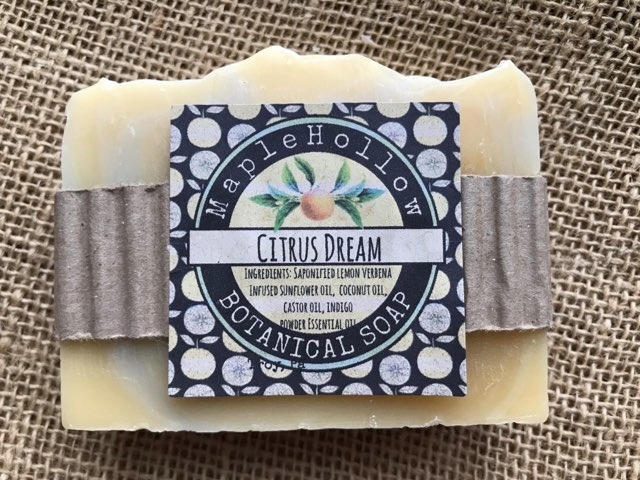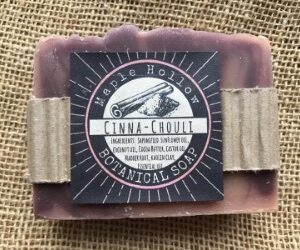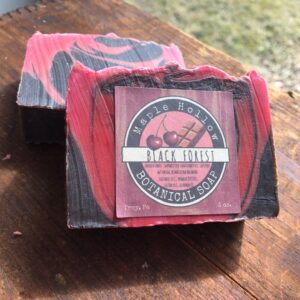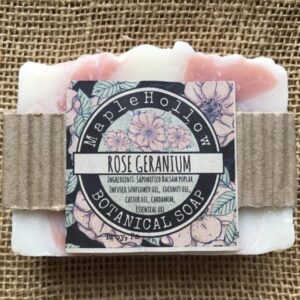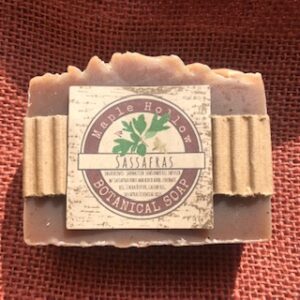Description
Ingredients
Saponified oils [locally pressed Helianthus annuus (sunflower) oil, locally pressed Brassica napus (canola) oil, Theobroma oil (cocoa butter), Cocos Nucifera (Coconut) Oil, Ricinus communis (castor) oil]; water; homegrown and wild crafted herbs; essential oils; kaolin clay.
Plant Spotlight: Calendula Officinalis
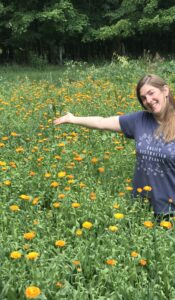
This is our calendula patch and I’m pretty much obsessed with it, as my kids would tell you. I even wrote my own poem for this plant which I shared below.
The thing that surprised me the most about calendula when I first started growing it was just how sticky the green calyces at the base of the blossoms are. When I harvest the flowers, they literally cover my fingertips in a thick golden tar, and I have to shake the blossoms off my fingers. That resin, of course is the medicine. They are best harvested on a sunny afternoon when the blossoms are fully opened, as they are sensitive to temperature and dampness. There is an old saying that if the calendula’s flowers are open, there will be a fine day ahead. Common names for the flower include Sun’s Bride and Summer’s Bride, indicating her affinity for the sunshine.
Medicinally, Calendula’s practical use date back to the ancient Egyptian, Roman, and Arab cultures, where it was used for everything from medicine, to dye, to food (it was even used as a saffron replacement). In the Middle Ages, calendula was a symbol of love, and it was believed that petals scattered under the pillow would make dreams come true. Shakespeare wrote about calendula in his play “A Winter’s Tale.”
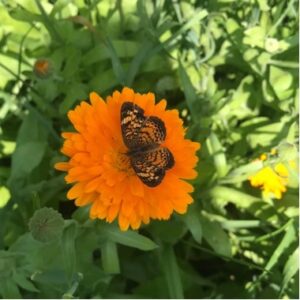
Today it is used dried or fresh, as a tea or infused in oil. It’s antiseptic, anti-inflammatory, anti-rheumatic, and generally healing properties make it useful for more than I can list here, but I can tell you firsthand that it makes a wonderful healing oil and antiseptic spray. It can treat upper respiratory infections when paired with mullein and marshmallow. My favorite preparation is to infuse the blossoms in oil. It is the most effective way to capture the flavonoids and carotenoids that heal skin and give this oil its glorious golden hue.
Although calendula has not naturalized in this region like other asters, it is grown by many garden enthusiasts and herbalists alike. It’s sticky buds cling to us in a way that it makes it impossible not to love her- a marvel of adaptability. Do I decide to plant calendula, or does she compel me? Here’s my shot at my first ever poem about a flower.
Plant Poetry
Sun’s Bride (Calendula Officinalis)
by Beth Ward
At dawn, the Sun’s Bride
pulls light earthward.
Bewitched by the saffron glow,
The sun easily surrenders his rays.
I too am enchanted,
popping the orange heads
from their stems into my basket,
a mirror of Sun’s happy glow.
It only takes five plucks to realize
this is no ordinary Asteraceae.
Her native cousin, the daisy,
dances nearby in the breeze, naïve, and aloof.
The marigold, however, knows a thing or two
about love, about healing, about survival.
She sticks to my fingers, unshakable, irresistible,
Her resinous golden tar, a panacea for the heart.
I am moved by an urgency, her
golden petals, and the passing of time.
She knows that when her blossoms ripen to seed,
I will be called to save them too.
The days shorten,
And Shakespeare reminds us that the marigold,
who “goes to bed wi’ the sun,”
will soon slumber.
She sleeps soundly knowing that,
unable to say goodbye,
I will tuck her seeds and petals
Under my pillow to dream,
And when the Sun rises,
Warming the earth in search of her affection,
I will join him,
pouring her seeds from my pouch.
Together we will wait, the Sun and I,
Patiently watching the dew and the dark soil
for the first sign of emergence-knowing that
soon we will again feel her resinous tug on our hearts.
-Beth Ward

